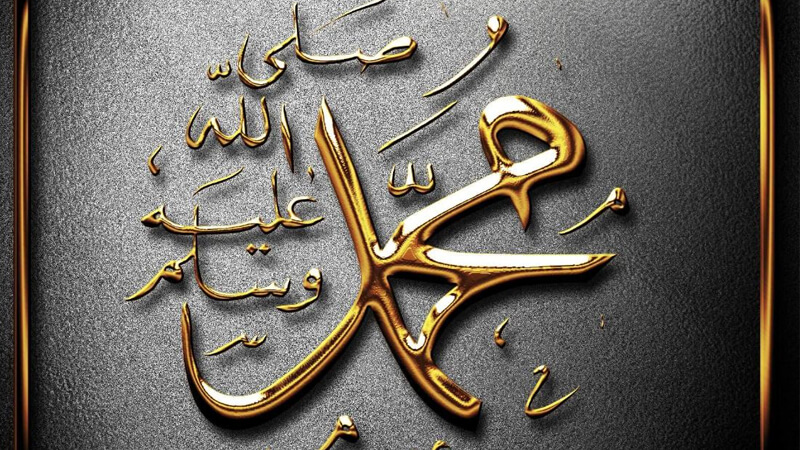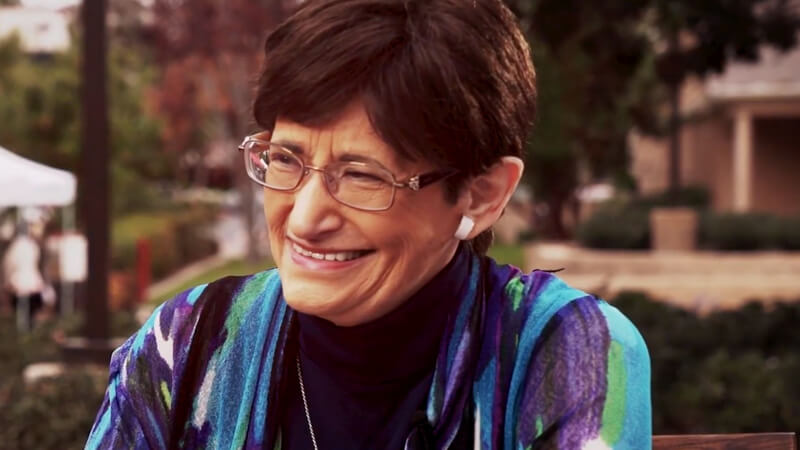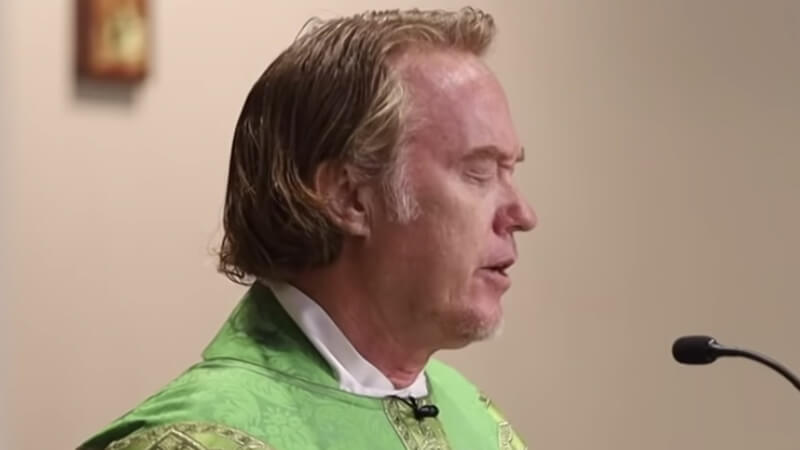Biography of the Prophet Muhammad:- The holy book of Islam is the Quran; in him his creed is expressed and his law is included.
Its unimpeachable and transcendental essence and appearance reside, for the Muslim faith, in containing the word of Allah revealed to his envoy or messenger (rasul) Muhammad, who was transmitting it (“in a clear Arabic language”, as the Quran itself says) to the people around him as a message of salvation.
Such revelations took place in spaced form from the year 610 of the Christian era until 632, in which he died. The Castilian name comes directly from the Arabic al-quran, word that means “recitation” or, by extension, “sacred text that is recited”.
It is a term related to Syriac, a language in which, even today, the liturgical readings of the Maronite rite are designated with the word qeryono.
It is also known as Alkitab (The Book), Furquan (“liberation”, “salvation”), Kitab-ul-lah (Book of God) and Al-tanzil (Revelation).
Biography of the Prophet Muhammad
- Born:- Mecca, Saudi Arabia
- Died:- 8 June 632 AD, Medina, Saudi Arabia
- Full Name:- Abū al-Qāsim Muḥammad ibn ʿAbd Allāh ibn ʿAbd al-Muṭṭalib ibn Hāshim
- Buried:- Al-Masjid an-Nabawi, Medina, Saudi Arabia
- Spouse:- Maymunah bint al-Harith (m. 629 AD–632 AD
Muhammad preached the texts he received by revelation, reciting them and reciting them to his faithful, who kept them by heart and sometimes copied them in writing.
See Also: Biography of San Pedro
For this purpose supports of all kinds were used: palm leaves, fragments of bone, animal skins, shoulder blades of camels, ostracas or any other similar object to write them.
Belonging to a culture of oral tradition, it would not be difficult for the faithful of the new religion to memorize brief, rhymed and rhythmic texts; no doubt they would be etched in the memory with ease.
At the death of Muhammad , the Muslims began to assemble all the existing Quranic texts in manuscripts, giving rise to divergences which were mitigated by the initiative of the caliph Uthman ibn Affan (644-656) to proceed to an official writing, constituted as a vulgar, with a characteristic consonant text that, however, did not eliminate the possibility of different “readings” (qiraat), whose variants (non-transcendental) are compatible with the consonantal text of Uthman, and are concretized in certain divergences of punctuation and vocalization.
The consonant text of Uthman was recast at the time of the Umayyad caliph Abd al-Malik (685-705), and spelled out with vowels and auxiliary graphic signs, possibly during the 8th century, for Malik, the famous alfaquí of Medina (died in 795 ), only admitted such signs in the copies used for teaching.
The Qur’anic text is distributed in 114 chapters or azoras (suras) , which, in turn, are formed by verses or verses (al-aya) . Each hawk has a title, more or less allusive; the first is Fatihaor “opening,” a short prayer, often recited, with only seven verses:
“In the name of God, the compassionate, the merciful!” Praised be God, Lord of the universe, the compassionate, the merciful, master of the day of judgment We adore you, we ask you for help.
Lead us on the right path, the path of those to whom you give your grace, not those who incur your anger or those who err.
To this initial azora follow the remaining 113, arranged from greater to lesser length: thus, the second azora (titled “The cow”) has 286 verses, some extensive, and the last azora (“Men”) has only six short verses .
The title that heads each one of the goshawks is taken either from one of the subjects treated in it or from a word or sentence that appears in it.
Here is the place where it was revealed, the number of verses or verses in it, and finally the basmalah (“In the Name of God, Merciful and Merciful”), invocation formula that initiates all the goshawks except the nine.
At the beginning of some azoras appear some letters called fawatih (“initials”) or al-huruf al-muqatta(“cut letters”), of which its exact meaning is not known; some scholars, such as Loth, consider them to be abbreviations of divine appellations, while others, such as Nöldeke, Hirschfeld, and Buhlcreen, believe that this is the initial or final letter of the name of those companions of the prophet who, corpus, which seems unlikely.
Others, like Zaki Mubarak, think that it can be musical notation. These letters have also been interpreted from perspectives that try to justify and prove the miraculous character of the Quran, as it is the case of the Muslim scholar Baydawi.
As the 114 chapters of the Qur’an are placed according to their length, the book does not follow a thematic order in its materials, so that the references on the same question or aspect are often scattered between several goshawks and ayes, and to resort to all of them in or der to gauge the whole of the Quranic doctrine in this regard.
The texts of the Qur’an are not ordered chronologically, following the temporal course of the life of the Prophet in which the revelations happened, with his successive stays in Mecca and Medina.
Very early on, proposals were made for the chronological classification of the various goshawks, especially in the interest of distinguishing ancient texts from later ones, since there are sometimes disagreements between them.
As the 114 chapters of the Qur’an are placed according to their length, the book does not follow a thematic order in its materials, so that the references on the same question or aspect are often scattered between several goshawks and ayes, and to resort to all of them in or der to gauge the whole of the Quranic doctrine in this regard.
The texts of the Qur’an are not ordered chronologically, following the temporal course of the life of the Prophet in which the revelations happened, with his successive stays in Mecca and Medina.
Very early on, proposals were made for the chronological classification of the various goshawks, especially in the interest of distinguishing ancient texts from later ones, since there are sometimes disagreements between them, and the content of an ancient passage can be changed in another revealed later. This gave rise to the technical procedure for fixing the abrogated texts by further repealers.
The goshawks or chapters are usually grouped in five periods. In the first Mequí period, which encompasses forty azoras, there is a clear presence of rhyme and rhythm. In this period the presence of God makes the man disappear.
God does not intend to give a code of action but to restore a cult. It is urged to admire things created as signs of the power of God and to remember the punishments received by other peoples of the past who did not listen to their prophets.
The day of Judgment appears as the last argument. In the second period, with 21 Goshawks, one begins to swear by the Qur’an rather than by the sun, moon, sky and other natural beings, and the story of the ancient Hebrew prophets unfolds. From this second period, also meki, begin to find Jewish influences that entered by direct route.
The texts revealed in the fourth period, already considered of the Mediní period, with 24 azoras, differ to a great extent of the texts of the mequi period.
Muhammad is here a man of state who addresses a group of believers. Its function is now to teach and not to convince. The style loses in lightness and becomes diffuse along very long verses.
Finally, the Azoras 2, 4, and 5 deal primarily with the organization of the new society and much of its history. It is a part with a clear Hebrew influence.
In its content as well as in its form, the Quran, as the divine word, is considered perfect. His text is also appreciated aesthetically, a fact that manifests itself in the art of its recitation, with its various and melodic interpretations, which can snatch the audience, and with the art of their calligraphy, also estimable.
As a sublime literary piece, the dogma of its inimitability became among the Muslims. For the worshipers, the style of the Quran is miraculously beautiful and impossible to imitate: any translation of the Quran into another language can only disfigure the text.
After much discussion, most Muslim theologians came to accept that the translations were legitimate in so far as they allowed them to approach the “ideas” of the Quran. Except in very special cases, the law prohibits the liturgical use of a translated Quran.
The Qur’an is thus surrounded, in its depth and form, with a halo of extraordinary respect, fervor and dedication, always present in the whole life of the Muslim, who seeks to preserve it, focusing on him his ideals and experiences, and resorting to its reading both daily and on solemn occasions.
The Quran agglutinates and marks in a primordial way the Islamic civilization, as a great axis of the same.
The Islamic creed
The Qur’an defines the beliefs of Islam and expresses its essential normative framework, being the main basis for regulating the life of the believer.
The Islamic faith focuses on believing in Allah, the only god, “without associate,” all-powerful, wise, merciful, creative, rewarding in the afterlife and in the final judgment with the resurrection of the dead.
These beliefs are those that are mainly contained and detailed in the hawks of Mecca, while in those of the Medina period the contents are usually more normative, directed to the community that was there governed by the Prophet.
The Qur’an reminds man of his smallness in the face of the wonders of nature, the work of God, whose greatness and magnanimity must be recognized and worshiped.
The message, in essence, is that there is only one God, creator of all things, who is the only one to be served by practicing a cult and observing correct behavior. God, ever merciful, has addressed mankind to be venere through multiple prophets, whom he has sent to preach his message and who have been repeatedly rejected.
The Quran confirms in several passages the existence of angels, demons and genii ( chinn). Alongside this, the Quran contains a whole set of ethical and moral precepts and recommendations, warnings about the arrival of the last day and the final judgment, stories about prophets prior to Muhammad and about the people to whom they were sent, and precepts concerning religion and other social matters, such as marriage, divorce or inheritance.
The general themes of the Qur’an and many illustrative stories share elements and contents with Christian scriptures (such as the legend of the seven sleepers) and beans, though they often unfold differently.
There are numerous details of the stories about early prophets that most resemble the versions found in the Jewish and Christian Apocrypha than the versions found in the Bible.
The Qur’an itself affirms that it has come to confirm the contribution of the previous Sacred Scriptures and mentions the Torah, the Psalms and the Gospel, as well as alluding to “Leaves of Abraham”. Qur’an monotheism is in the same tradition as that of Judaism, and there are many images and expressions that can be found in the Quran and in the biblical tradition. In fact,
In general, the Qur’an is situated within the framework of the life of the Bedouins, but also of merchants, sailors and fishermen, and there is no shortage, despite the sobriety and succinct style of the Quran, allusions to the caravans of winter and summer that the caravans of Mecca led to Aden or Syria.
The proper Arabic atmosphere can be identified in questions such as the existence of mysterious beings called geniuses or the exaltation of generosity, bravery and family solidarity.
They are also characteristic of the Arabs the high esteem that they profess to eloquence and the Arab style. Rituals such as the pilgrimage to Mecca and the seven rounds around the Kaaba also reveal the very Arab aspect, given the unique interest that the stones and the number seven have in the Semitic cults.
The prohibitions concerning sacred territories and the animals that live in them are also Semitic aspects that the Quran has preserved, purifying the elements incompatible with monotheism.
Also coming from the Arab tradition are the sacred months, during which hostilities were not allowed, as well as the earliest fragments of the Qur’an in which passages of short phrases ended always on the same syllable, surely a kind of Arabic-style oracles , which caused Muhammad’s opponents to accuse him of being a magician or fortune-teller.
Except in the case of holy war, the Qur’an leaves men within the framework of their daily life, demanding only that they work well where they are, that they do not commit excesses, that they use the goods that God grants them, and who are able to let go of their selfishness to help the poor or the community.
For Muslims, the Quran, as the word of God as revealed to the Prophet Muhammad to guide all humans, is the fundamental source of all legal rule.
The legal norms contained in the Quran are about two hundred and are exposed in various verses. In spite of the short number of norms, the work of exegesis and methodological induction of the four theological-juridical schools (hanefí, malikí, chafeí and hambalí) would give rise during the centuries VII and VIII to the Islamic legal system.
One of the characteristics of the Quran that has its reflection in all the norms of the Islamic legal system is the unicity between religion, morality and law.
The religious and moral precepts and even certain social uses form the same norm with the same binding effect. It becomes difficult, therefore, to separate from each other.
Exegesis of the Quran
The Quran is accepted among most Muslims as the literal word of God, and therefore is the center around which the Islamic world gravitates; its value is comparable to that which Jews give to the Torah or to which the figure of Jesus has for Christians.
Among the religious obligations of every good Muslim is included, along with the obligatory daily prayer, to recite complete passages of the Qur’an; Secular education also requires learning by heart.
Muslims consider the text of the Qur’an as one of the main sources of Islamic culture, along with Hadith (a tradition that reflects the behavior and practices of the Prophet) and, for the Shiites, the teachings of the Imams.
There are passages of complex and divergent interpretation in the Qur’an, which is even noticed in the azorah III, verse 7: “He [Allah] is the One Who has revealed the Scripture, some of his verses are univocal and constitute the Matrix Scripture.
Those of a lost heart follow the equivocations, by a spirit of discord and by wanting to give their own interpretation, but no one but God knows their interpretation. ”
The importance of the fixation and correct understanding of the Qur’anic text constituted the “science of the Quran” as a key element of Islamic culture, developing, among other aspects, the discipline of its interpretation, from the grammatical and lexical bases to the dogmatic and legal .
There are numerous comments from the Quran, produced from all orthodox or Sunni (with its various schools), Shiites and Jariyíes tendencies; Sufi exegesis takes allegorical projections.
These commentary and interpretation works(tafsir) can be reduced or cover many volumes, such as al-Tabari, which comprises thirty volumes.
Although some believers consider that the Quran sums up all of Islamand that this cannot be found outside this sacred text, the fact is that the complex reality of the Islamic world extends beyond its pages.
Nor is it possible to affirm, without distorting reality, that the Quran represents true Islam without regard to the numerous enlargements and glosses made at the margin, judged to be corrupt by the most orthodox, and are contained in traditional Muslim teachings.
It is not possible to understand the Qur’an without taking into account the exegetical tradition and interpretation that has developed around it.
This tradition resolves and helps to understand the complex ambiguities of the Quran. It is this tradition, even, that gives substance to the belief that the Quran contains a series of revelations made to Muhammad.
The interpretation of the Qur’an ( tafsir), a field of research within Islam that still survives from its beginnings even at the time of the establishment of the text, in Uthman’s time, has given birth to numerous books and treatises.
The different approaches that have taken place in the attempt to unravel the true meaning of the text gave rise to exegetical treatises of different nature and perspective.
Thus, al-Tabari (died in 923) was based on tradition; al-Baydawí (died about 1291) and Nasafí (died in 1310) developed a linguistic exegesis; al-Razi (died in 1209) rationally elaborated the previous elements.
The Spanish-Arab Abu Hayyan (died in 1345) also wrote a monumental exegetical treatise on the Quran. Al-Talabi (died in 1038) analyzes in order in his work on prophets all the verses of the Quran that refer to the subject.
The work of al-Tabari analyzes the Quran verse by verse and offers the different opinions that scholars of the time gave about vocalization, grammar, lexicography, ethical and moral interpretation, as well as the relationships of the sacred text with the life of Muhammad.
The different points of view are collected without any comment, although it is common for al-Tabari to indicate which of them enjoys his predilection.
This exhaustive procedure of al-Tabari has been followed by numerous later commentaries, although others have preferred to follow criteria of simplicity and brevity, choosing to comment only a few verses, or choosing a single theme for study, such as the vocabulary of the Qur’an, subject of considerable complexity and difficulty due to its theological implications, in addition to the difficulty that is intrinsically its own. In general, the sacred text of Islam is considered in relation to the context of the life of the Prophet, and is granted, from this premise, a universal and timeless scope.
The passages related to the life of Muhammad are understood to have been revealed in connection with specific incidents in his life or to solve specific problems he faced.
Some researchers outside the Muslim area have pointed to the midrash procedure according to which certain aspects of Muhammad’s life have been created from some passages of the sacred text.
According to this interpretive current, this procedure bears quite a resemblance to the way in which the Jewish tradition fabricated the stories of the Midras from biblical characters, while composing the biblical text.
If so, explaining the Qur’an by reference to the Prophet’s biography would be a mode of circular reasoning, considered in scientific terms as a serious threat to the validity of the argument.
The interpretations of the Qur’an often reflect the divergences and different tendencies within the Muslim community.
Especially striking is the difference between the Shi’ite interpretation of some verses in particular and the Sunni interpretation, for the Shiites find in the Qur’anic verses references to the special status of Ali ibn Abi Talib and the Imams, whereas the Sunnis find no such references.
According to the Shiites, the caliph Uthman suppressed from the Qur’an the fragments that referred to Ali and his rights to succeed Muhammad in his political and religious tasks, an accusation that does not seem justified.
The uncreated and eternal nature of God’s word attributed to the Qur’an, in the face of the consideration of it as something created in time, was one of the most ignited topics of discussion in the origins of Islam.
This discussion included questions of theology with grave and serious consequences in the political field concerning the relative authority of caliphs and scholars of religion (ulemas).
Although the consideration of the Quran has prevailed as something uncreated, the Shiites have opposed it. These divergences have led both reformists and fundamentalists to interpret the text in a partisan way, so that it adequately accommodates its (in many cases) contradictory points of view.
Within the interpretive currents there are those who come to affirm that the Quran fits many of the ideas defended by modern science, and even to ensure that it actually predicts them.
The very dark nature of the Qur’anic text undoubtedly promotes the emergence of such different, divergent, and often contradictory interpretations.




